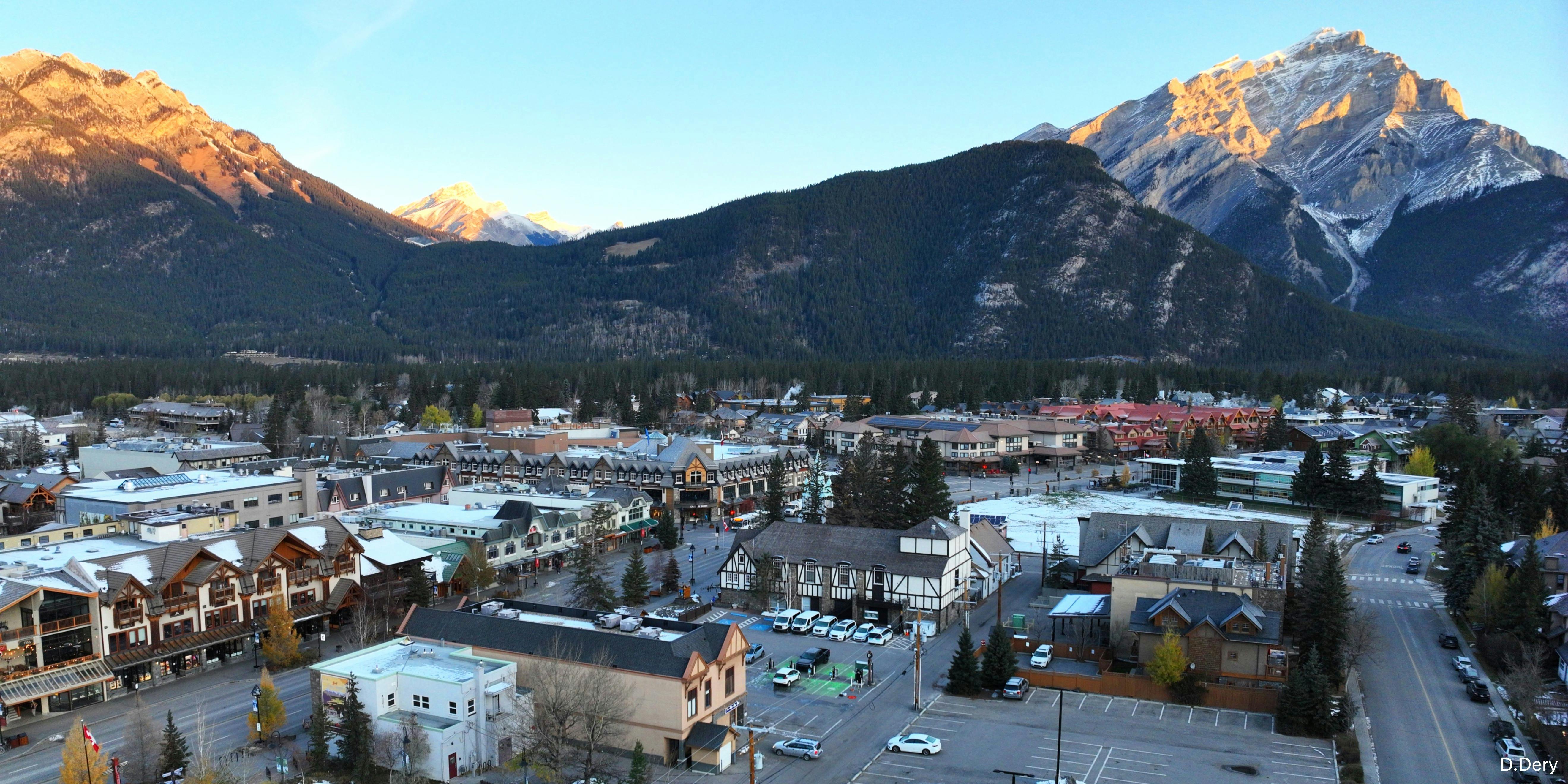200-Block Banff Avenue Redevelopment
Over the past two and a half decades, Parks Canada has been working towards obtaining lands and developing a future-forward vision for the redevelopment of the 200-Block of Banff Avenue. The long-held vision for the 10 contiguous lots is that they would be revitalized to contain purpose-built spaces and facilities to support visitor reception, enjoyment and connection with the rest of the park, and foster understanding of the challenges faced by protected areas like Banff National Park.
In 2022, Parks Canada received funding to proceed with detailed studies of the site and initiate engagement with Indigenous communities, stakeholders, and the public on the vision for redevelopment.
All feedback from the first phase of engagement has been reviewed and considered and Parks Canada has prepared a What We Heard Summary. (See 'Documents' section)
Parks Canada heard clearly that the redevelopment of the 200-block of Banff Avenue presents a unique opportunity to:
- modernize facilities and open spaces in downtown Banff to welcome national park visitors,
- encourage connection with the national park,
- foster a welcoming and vibrant community, and
- look at options to address housing needs for eligible residents.
Given the scope and legacy of this project, Parks Canada has contracted the Royal Architectural Institute of Canada (RAIC) to oversee an International Design Competition.
The pre-qualification stage of the design competition was open to teams from June 26 to August 12, 2025. With the tender having been publicly posted on CanadaBuys, amplified on Parks Canada and RAIC platforms and shared broadly amongst the architectural community, Parks Canada received 44 complete submissions from multidisciplinary teams.
Following a rigorous evaluation process, the top six ranked pre-qualified teams are advancing to the one-stage design competition. Listed below in alphabetical order, they are:
- Alison Brooks Architects with Kumlin Sullivan Architecture Studio
- EVOQ + Ryder
- KENGO KUMA & ASSOCIATES + Paul Raff Studio
- KPMB Architects
- Revery Architecture
- Stantec Architecture
Each team brings together a range of expertise, including Indigenous knowledge weavers and visitor experience specialists. These interdisciplinary teams reflect a deep commitment to design excellence, sustainability, and cultural awareness.
The conceptual design phase of the competition officially launched on October 14, 2025. The six teams will have 7.5 weeks to develop and submit a conceptual design proposal to Parks Canada for the 200-Block Redevelopment. This phase will conclude in December 2025, followed by technical evaluations, further public engagement periods and jury deliberation.
Engagement to date has been used to guide the design competition. The values and vision desired by Indigenous communities, stakeholders, and the public are reflected in the materials presented to the six teams submitting conceptual designs. Upcoming engagement will allow the public to share input on the submitted conceptual designs and will be shared with the jury for their consideration during evaluations. Stay tuned for this engagement period in early 2026.
This is a unique, once in a generation opportunity to redevelop 10 contiguous lots in downtown Banff into a vibrant public space that provides a true-to-place experience for visitors which inspires exploration, builds stewardship, and encourages connection.
Links
Pre-Qualification Phase News Release and Quick Facts: Parks Canada News Release
Design Competition Launch: 🚨 200-Block Banff Avenue... - Banff National Park | Facebook
RAIC: 200-Block Banff Avenue Redevelopment Project | Royal Architectural Institute of Canada
We Want to Hear from You!
Parks Canada wants to ensure that the 200-Block redevelopment reflects the values and views of Canadians and makes a meaningful contribution to the visitor experience. Advice and feedback from Canadians are an essential component in achieving this. A summary of what we heard during the first phase of engagement is below.
Please check back regularly for the second phase of engagement when we seek input on the conceptual designs submitted through the design competition

